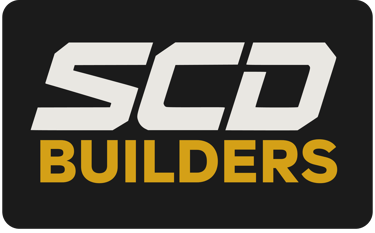Featuring Robert Browning
For nearly three decades, Robert Browning has built his career around solving problems in the electrical trade. A licensed journeyman electrician in the state of Florida, Robert has spent 29 years in the industry—first with a toolbelt in the field, and later in leadership roles overseeing operations, estimating, and project management. Today, he’s bringing that deep field and office experience into the world of BIM and VDC, helping ensure that digital models actually support how projects get built in the real world.
REAL ELECTRICIANS BEHIND THE BIM
11/14/20254 min read
Featuring Robert Browning
For nearly three decades, Robert Browning has built his career around solving problems in the electrical trade. A licensed journeyman electrician in the state of Florida, Robert has spent 29 years in the industry—first with a toolbelt in the field, and later in leadership roles overseeing operations, estimating, and project management.
Today, he’s bringing that deep field and office experience into the world of BIM and VDC, helping ensure that digital models actually support how projects get built in the real world.
From the Field to the Front Office
Robert’s career started traditionally: in the field, installing, troubleshooting, and coordinating work alongside other trades. Over time, his work ethic and approach caught the attention of company leadership.
In the early 1990s, after the owner of his company suffered a minor stroke, Robert was asked to put down his tools and step into the office. From there, he was mentored directly in:
Project estimating
Project management
Operations oversight
Material tracking and purchasing
As-builts and documentation
His military background gave him a foundation in computers, which made the transition smoother. For more than 20 years, he worked as an operations manager and “second in command”—bridging the gap between field execution and office planning.
More recently, Robert stepped briefly outside the traditional electrical world, performing traveling solar assessments for the U.S. government, working remotely and spending more time with his family. That remote experience opened his eyes to new ways of working—and made the move into BIM/VDC especially appealing.
Discovering BIM and the Next Phase of His Career
When Robert first saw the BIM/VDC training opportunity from SCD Builders on LinkedIn, he freely admits: he had no idea what BIM was.
Curiosity led him to research BIM and digital construction. The more he learned, the more it clicked:
A way to combine his field experience, office background, and computer skills
A path into remote, highly skilled work that still stays close to the trade
A chance to shape projects early, instead of just reacting to problems in the field
He joined the training program in August and hasn’t looked back.
“I’ve learned so much about layout and coordination. Revit especially blew me away—I didn’t know there was a tool where you could lay out, take off, and design the job all in one program.”
The Power of Revit: Seeing the Whole Job in One Place
For Robert, one of the biggest revelations has been Revit and the way it consolidates the entire project:
Layout
Design
Quantity takeoffs
Coordination with other trades
Coming from a background where estimating, design, and coordination lived in separate tools—or on paper—seeing everything in one environment has been transformative.
He often catches himself thinking about his former coworkers:
“If they knew this was out there, it would make their estimating and project management so much better.”
How SCD’s BIM/VDC Training Supports Field Trades
Robert recognizes that he and his cohort are part of the ground floor of a growing education and training effort. The program is evolving—but he sees enormous potential.
He believes that as the structure and content stabilize, the training will become an excellent pathway for experienced tradespeople who want to transition into digital construction:
Clearer, more predictable instruction flow
Fewer format changes as the program matures
A stronger bridge between field knowledge and modeling skills
In his view, SCD Builders is doing what many in the industry have talked about for years: intentionally bringing field electricians into BIM/VDC, instead of relying only on traditional “computer people.”
Why Real Electricians Make a Difference in BIM
Robert is direct about the impact of having real tradespeople behind the models:
“Computer people are great at software. But if you’ve never strapped conduit, dug underground, or fought for space above a ceiling, you’re going to miss things.”
From his perspective, field-experienced BIM modelers bring critical advantages:
Knowing when conduit should go underground versus overhead
Understanding real strapping distances, support requirements, and code clearances
Anticipating trade conflicts before they show up in the field
Respecting how electricians actually build, route, and sequence work
Different regions build differently—Florida is more forgiving for underground work than rocky or mountainous terrain—but the core principle holds: field experience drives better modeling decisions.
What Goes Wrong When Models Are Built Without Field Experience
When BIM models are created by people with no field background, Robert sees predictable problems:
More clashes and more time spent resolving them
Unrealistic strapping spacing or support conditions
Misunderstood equipment clearances in electrical rooms
Mechanical and plumbing systems placed without regard for electrical routes
Even without measuring every dimension, he can visually spot when spacing or supports don’t align with code or best practices. That intuition comes from decades of installing, not just drawing.
“There’s a lot you only really understand after you’ve done the work yourself.”
Open to Data Centers, Hospitals, Commercial—And More
Robert is open to working on any BIM/VDC project type:
Data centers (new territory he’s eager to explore)
Hospitals (where he has significant renovation experience)
Commercial projects (familiar and highly repetitive)
Whether it’s new construction or renovation, he’s motivated by the chance to apply his trade experience in a way that benefits coordination, schedule, and quality.
How Robert Adds Value as a BIM/VDC Manager
Robert’s strengths are rooted in his dual background:
Trade knowledge: 29 years as an electrician, including years in the field
Leadership & coordination: Operations management, project oversight, and logistics
Problem solving: Daily collaboration with GCs, painters, plumbers, framers, and other trades
Technology adoption: Comfortable with computer-based tools from his military and office experience
He sums it up simply:
“We were professional problem solvers as electricians. Now we’re just solving them earlier—digitally.”
By building models that are aligned with how the work is actually installed, he helps:
Reduce RFIs and delays
Improve constructibility
Make life easier for field crews
Why He Recommends This Path to Other Tradespeople
Robert sees BIM/VDC as the future of the industry—and a powerful career path for experienced tradespeople who want:
Less physical wear and tear
More time with family
Remote or hybrid work opportunities
A way to stay close to the trade while evolving with technology
He already knows other electricians who are interested in transitioning out of the field and into digital construction. He’s waiting to complete the program before formally recommending it, but his opinion is clear:
“It’s new tech, it’s where the industry is headed, and it’s worth it.”
He often frames it in relatable terms:
“Imagine turning your work into something that feels like a video game—and getting paid well to do it from home while you’re with your kids.”
What “Building Digitally” Means to Robert
For Robert, building digitally means seeing the project completely before anyone sets foot on-site:
Not just 2D conduits on paper
True overlays of electrical, mechanical, plumbing, and structure
Clear visualization of walls, rooms, and systems in three dimensions
That level of coordination, he believes, cuts down on:
RFIs
Rework
Schedule disruptions
It’s a shift from reacting to problems in the field to anticipating and resolving them before construction begins.
About SCD Builders
SCD Builders is a BIM/VDC outsourcing, staffing, and training organization built by former field professionals. Our teams bring together real electricians, foremen, and builders who now apply their experience in the digital environment.
Our mission is simple: put real builders behind the models so jobs get built right—the first time.



